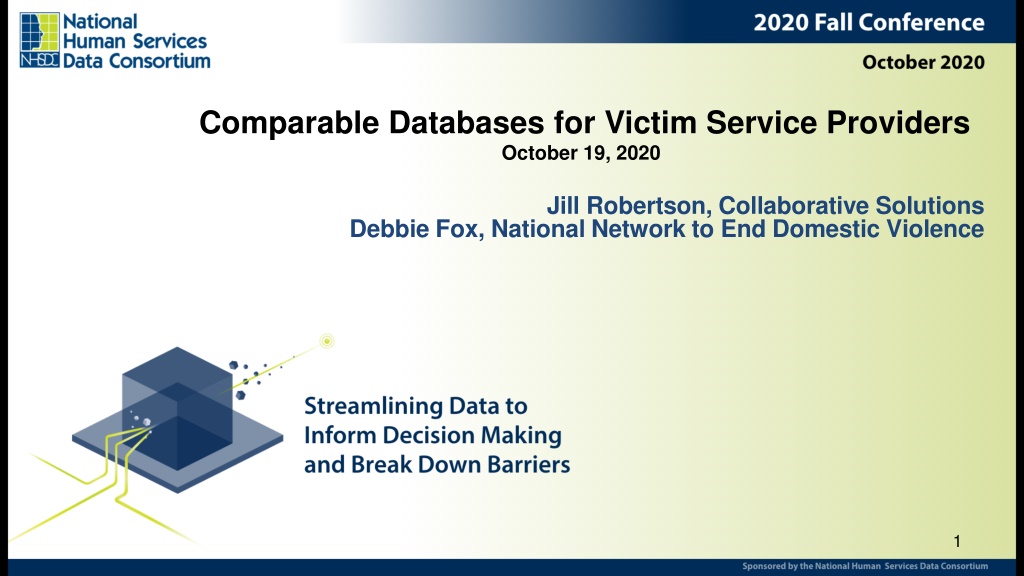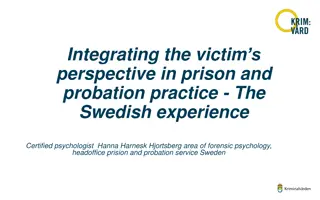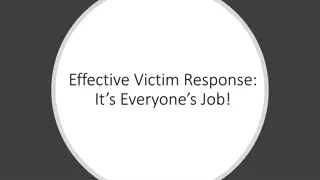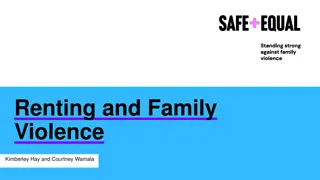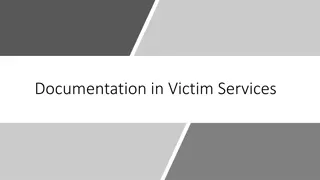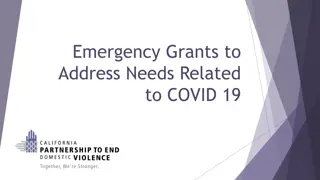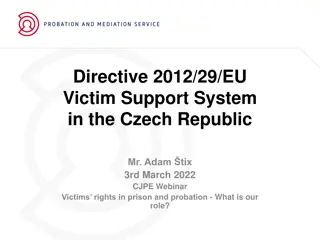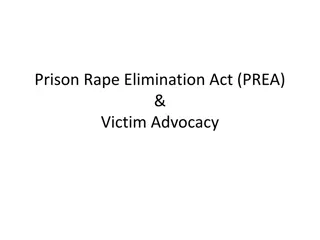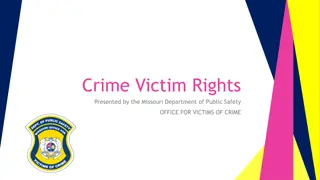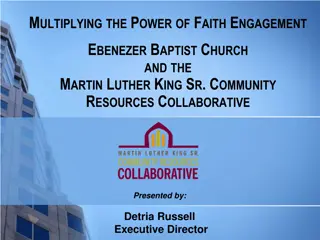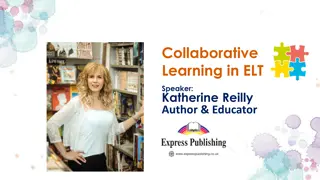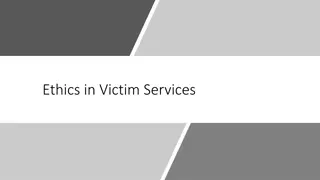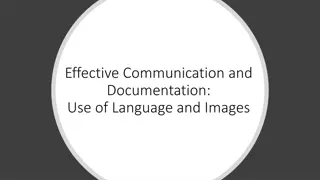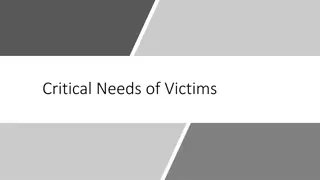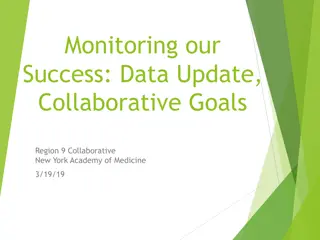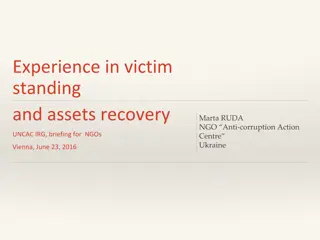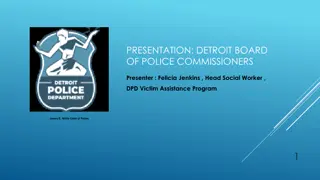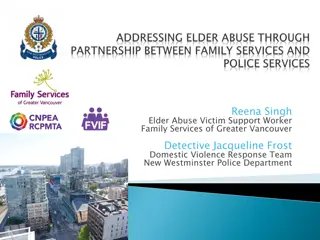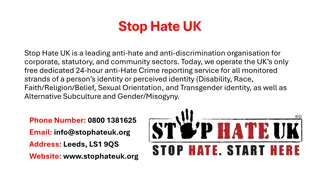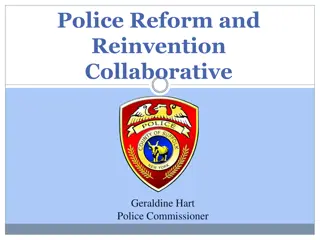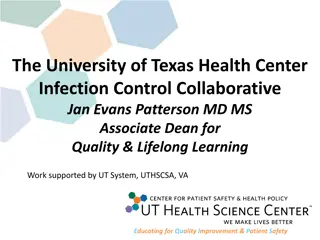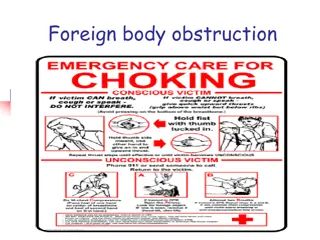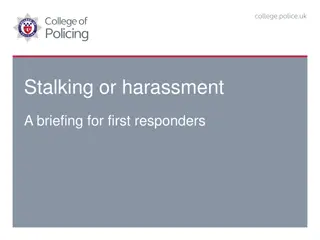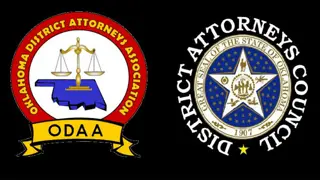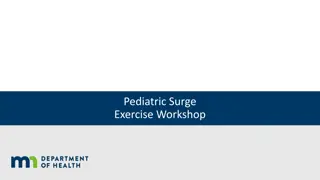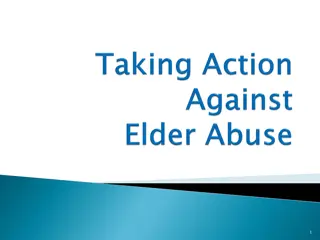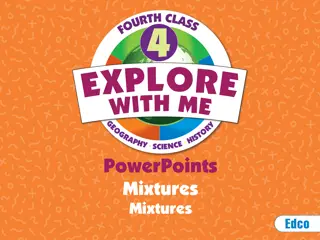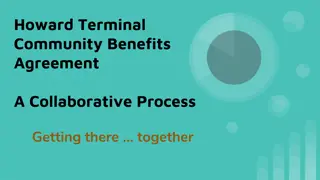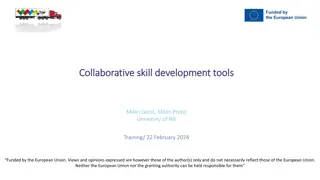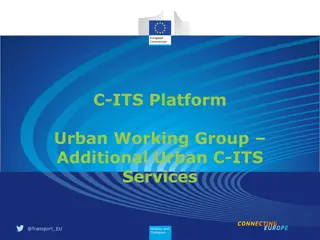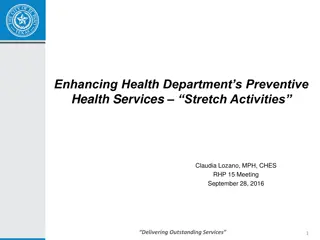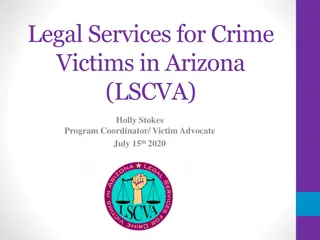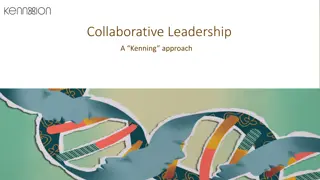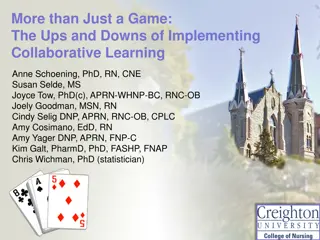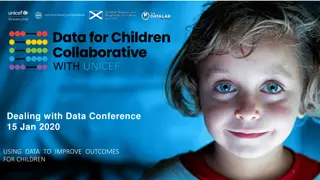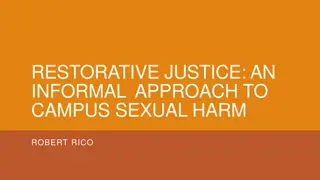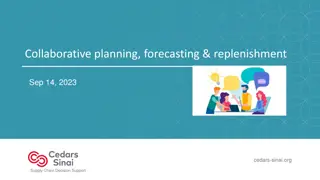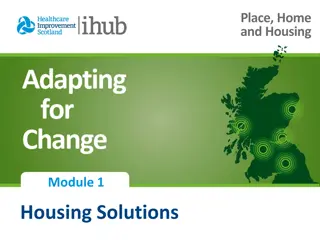Enhancing Victim Services through Collaborative Solutions
The webinar, hosted by Jill Robertson and Debbie Fox, delves into comparable databases for victim service providers, offering valuable insights and instructions on how to access recorded versions. Additionally, the National Human Services Data Consortium (NHSDC) is highlighted for its role in promoting effective leadership in managing human services through technology initiatives. Collaborative Solutions, Inc., and the National Network to End Domestic Violence are also featured for their impactful work in empowering communities and advocating for social change in ending domestic violence.
Download Presentation

Please find below an Image/Link to download the presentation.
The content on the website is provided AS IS for your information and personal use only. It may not be sold, licensed, or shared on other websites without obtaining consent from the author. Download presentation by click this link. If you encounter any issues during the download, it is possible that the publisher has removed the file from their server.
E N D
Presentation Transcript
Comparable Databases for Victim Service Providers October 19, 2020 Jill Robertson, Collaborative Solutions Debbie Fox, National Network to End Domestic Violence 1
Webinar Instructions Webinar will last about 75 minutes Access to recorded version Participants in listen only mode Submit content related questions in Q&A box on right side of screen For technical issues, request assistance through the Chat box 2
Content Questions? Please submit your content related questions via the Q&A box Send to Host, Presenter and Panelists 3
Technical Questions Please submit any technical issue related questions via the Chat box Send the message directly to the Host Host will work directly with you to resolve those issues 4
About NHSDC The National Human Services Data Consortium (NHSDC) is an organization focused on developing effective leadership for the best use of information technology to manage human services. NHSDC provides information, assistance, peer to peer education and lifelong learning to its conference participants, website members and other interested parties in the articulation, planning, implementation and continuous operation of technology initiatives to collect, aggregate, analyze and present information regarding the provision of human services. NHSDC holds two conferences every year that convene human services administrators primarily working in the homeless services data space together to learn best practices and share knowledge. The past 3 events have been put on with HUD as a co-sponsor. Learn more on our web site www.nhsdc.org. After this virtual conference is over, NHSDC will be sending out a survey to learn about your experience. Please help us by signing up for emails and participating in the survey!
Collaborative Solutions, Inc.: What We Do Collaborative Solutions works in partnership for the empowerment of human services organizations and communities in order to positively impact special needs populations. Value: All individuals have a right to housing that is adequate, accessible, and affordable Goal: Impact supportive housing systems to meet the needs of vulnerable populations Impact: Build capacity of communities and maximize their long-term impact on areas of housing, health, and services 6
National Network to End Domestic Violence The National Network to End Domestic Violence (NNEDV) is a social change organization dedicated to creating a social, political and economic environment where violence against women no longer exists. NNEDV s Collaborative Approach to Safe Housing for Survivors Project provides training and technical assistance to improve coordination between domestic violence and homeless services from racial equity lens. NNEDV s Safety Net Project addresses the intersection of technology and abuse, and provides training and technical assistance to advocates, law enforcement, legal services, social services providers, survivors, and other stakeholders. Twitter @nnedv.org www.nnedv.org 7
DV & Housing TA Consortium Four Federal Agencies: Family Violence Prevention & Services Program/HHS Office on Violence Against Women/DOJ Office for Victims of Crime/DOJ Office of Special Needs Assistance Programs/HUD Five Technical Assistance Providers: National Alliance for Safe Housing (NASH) Collaborative Solutions, Inc. (CS) National Network to End Domestic Violence (NNEDV) National Resource Center on Domestic Violence (NRCDV) National Sexual Violence Resource Center (NSVRC) 8
Overview HUD Data Elements through the Victim Service Provider (VSPs) lens What are the implications? Regulations What are best practices for gathering data for survivors? Data to inform policies and practices Data safety and data quality 9
10 Data Implications How does the data from your HMIS or Comparable database impact practices, drive funding and impact who receives housing? What are HUD related funding streams VSPs receive? What are the HMIS Data Elements? How is this impactful for victim service providers?
11 Data related regulations for agencies Discussion of VAWA regulations VAWA considerations
12 Best Practices for Survivor Data What is a Comparable Database? Why do we need a comparable database? What are the key considerations for comparable databases?
What is a Comparable Database? Comparable Database (not HMIS) used by Victim Service Providers to collect client information HUD-compliant Comparable Database: o Relational Database o Meets minimum HMIS Data Standards https://files.hudexchange.info/resources/documents/HMIS-Data-Standards-Manual.pdf o Meets minimum standards of HMIS Privacy and Security https://files.hudexchange.info/resources/documents/2004HUDDataandTechnicalStandards.pdf o ESG-CAPER and APR reports for SAGE 13
What is a Comparable Database? (Continued) Use more stringent security and privacy standards per VAWA Victim Service Provider Controls: o Who can access the system o Who can see client information Data fields that can be modified and customized to benefit clients Mutually agreed upon by VSP and HMIS Lead 14
Poll Question Does your agency A. Currently use a Comparable Database? B. Searching for a new Comparable Database vendor? C. Looking to upgrade your existing database? D. Unsure? 15
Why do we need a Comparable Database? Confidentiality provisions in the Violence Against Women Act (VAWA) and the Family Violence Prevention and Services Act (FVPSA). o Forbids victim service providers from entering personally identifying information into shared databases like HMIS. o Information entered into a Comparable Database is confidential and cannot be shared with any 3rd parties outside of the agency. o Only aggregate level data can be shared for reporting purposes . HMIS Proposed Rule o Victim service providers who receive funds that require HMIS participation must use a Comparable Database. 16
How do you know if you need a Comparable Database? The HEARTH Act defines a victim service provider as a private nonprofit organization whose primary mission is to provide services to victims of domestic violence, dating violence, sexual assault, or stalking. Such term includes rape crisis centers, battered women s shelters, domestic violence transitional housing and programs, and other programs. HMIS use across an agency is prohibited for agencies that do not meet this definition but receive and use funding in an agency wide capacity: Office of Violence Against Women (OVW) Office for Victims of Crime (OVC) Family-Violence Prevention and Services Act (FVPSA) Most agencies fall into one of these categories 17
Key Considerations for Comparable Databases Database encryption User authentication Data purge Contracting with a comparable database vendor Other guidance o HMIS Software Vendor Capacity Checklist https://files.hudexchange.info/resources/documents/HMIS-Software-Vendor-Capacity- Checklist.pdf o Technology Safety https://www.techsafety.org/selecting-a-database 19
Database Encryption Minimum of 128-bit encryption and utilization of SSL certificates At-Rest encryption? Zero-Knowledge encryption? Encryption key management? Must be clearly defined by the vendor 20
User Authentication Best Practices Complex passwords Required password updates Automatic logout when idle Automatic account deactivation when system not accessed Automatic user lockout after unsuccessful login attempts Concurrent logins not allowed Consider two-factor authentication 21
Data Safety & Purging Best practice for victim service providers Data should be routinely destroyed as soon as the program no longer needs the data to provide client services or to satisfy grant/legal requirements Key Considerations o Delete vs. Purge o Manual vs. Automatic o All Data vs. Selected Data/De-Identification o Data may still exist in database backups 22
Other Comparable Database Considerations Other reports-customizable VOCA, STOP, FFV, OVW, OVC and other state, local, and foundation reports Costs licensing vs. total cost of ownership Company reviews References 23
Key Considerations when contracting with a Comparable Database Vendor Clearly defined and prioritized deliverables. Specified procedures for HUD compliance updates, system upgrades with expected release timelines and user acceptance testing. Technical support terms. Training. Defined processes/liabilities in the event of a security breach. Protocols for responding to subpoenas, warrants or law enforcement requests. Conflict resolution processes. Contract termination process. Monitoring protocols. 24
Data Quality - Victim Service Providers Data matters for all programs Data should inform and drive your policies and practices VSPs should work with Continuums of Care (CoCs) to ensure survivors are being prioritized for housing options 25
HUD and Field Guidance Coordinated Entry: Confidentiality Requirements in Practice https://safehousingpartnerships.org/sites/default/files/2018-04/Coordinated%20Entry.pdf HUD COVID-19 Homeless System Response: VSP Comparable Database & Reporting Requirements https://safehousingpartnerships.org/sites/default/files/2020- 08/VSP%20Comparable%20Database%20and%20Reporting%20Requirements%20FINAL. pdf Comparable Database 101: What Victim Service Providers Need to Know https://safehousingpartnerships.org/sites/default/files/2019-03/NNEDV_SHP- ComparableDatabase101-Revised2018.pdf 26
Questions and Contacts Debbie Fox: dfox@nnedv.org twitter: @thedebbiefox Jill Robertson: jill@collaborative-solutions.net www.safehousingpartnerships.org 27
